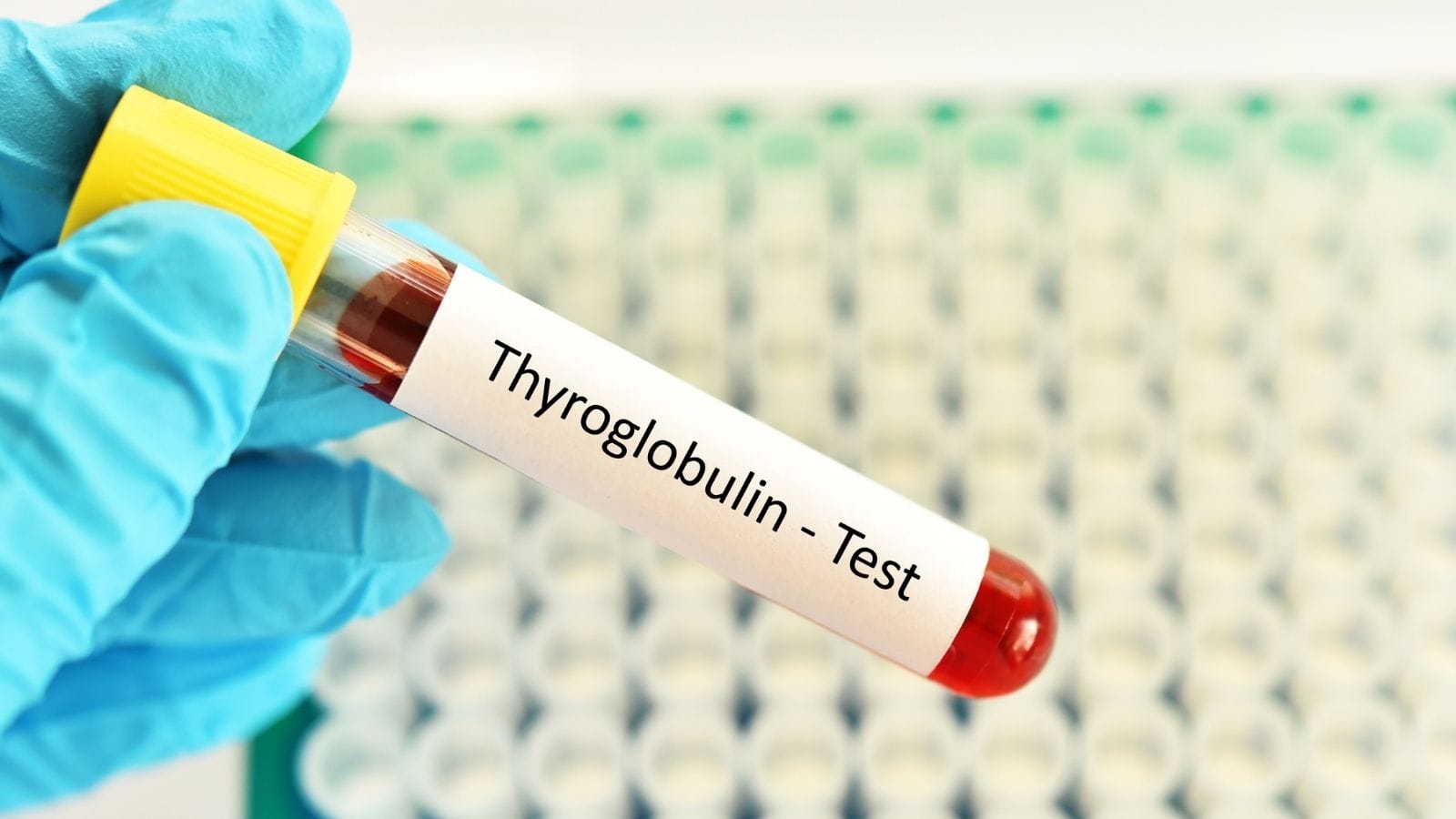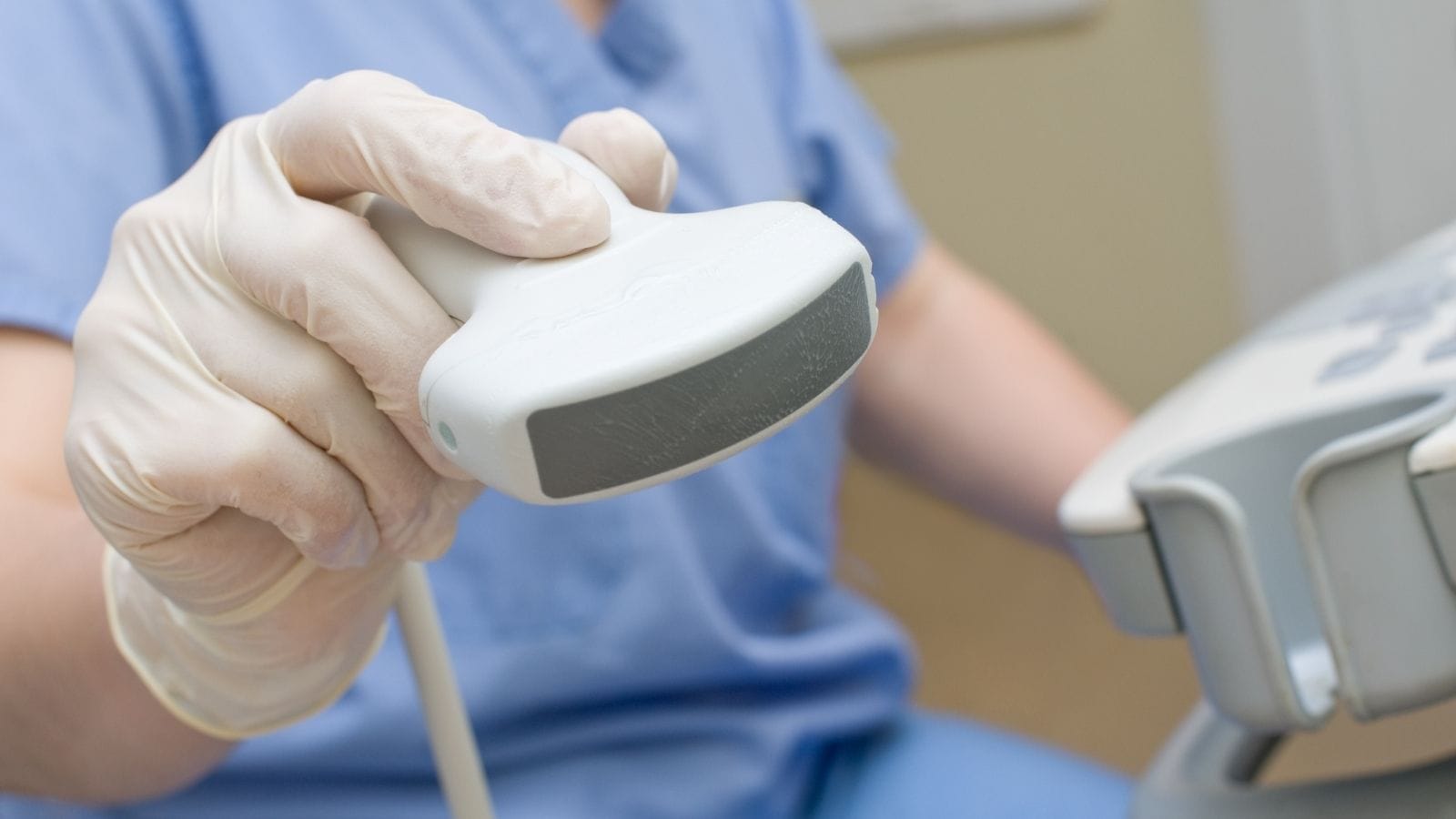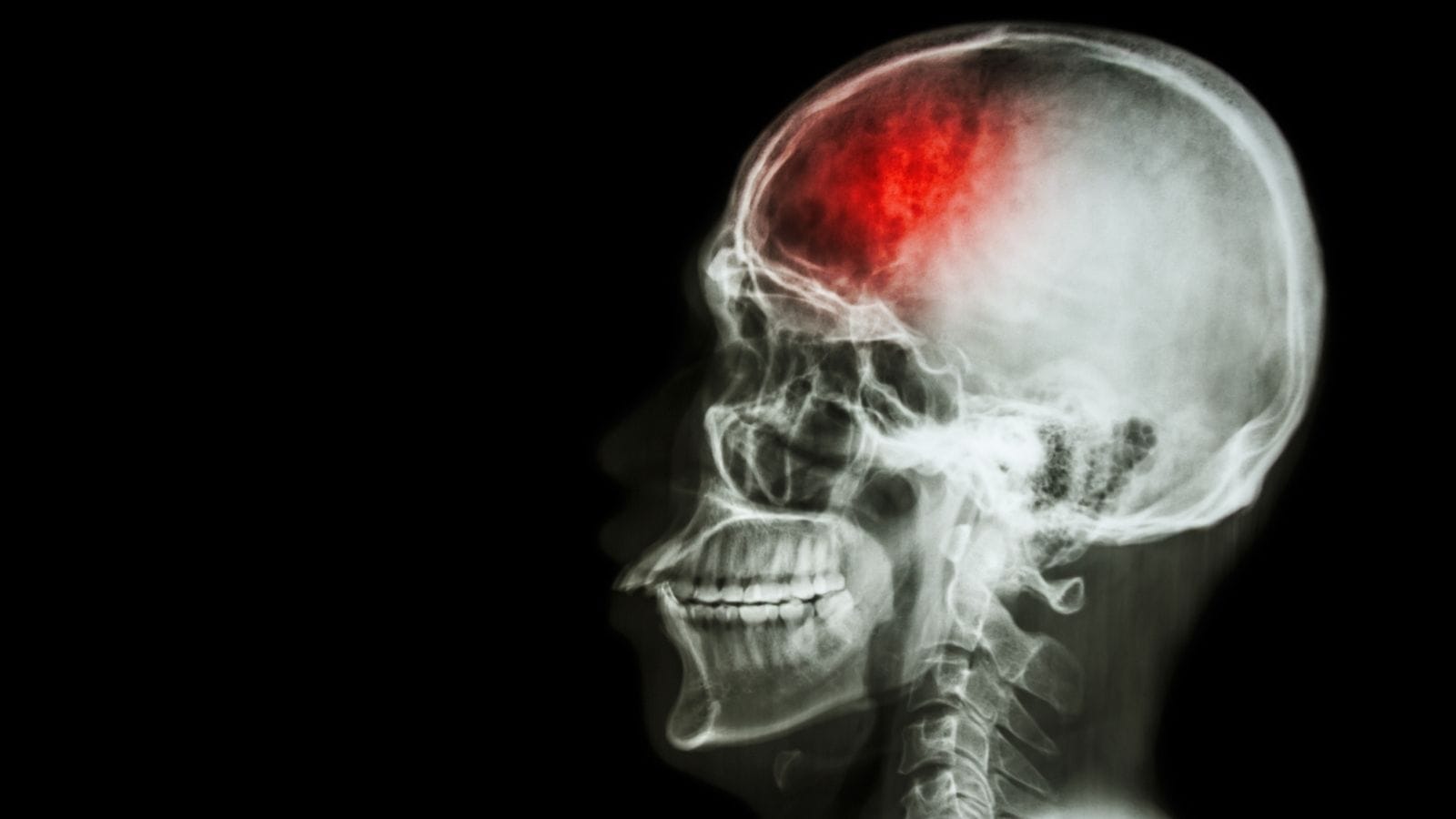Papillary thyroid cancer is the most common type of thyroid malignancy, accounting for nearly 80% of cases. It usually grows slowly and has an excellent prognosis with proper treatment.
Symptoms of papillary thyroid cancer include a neck mass, hoarseness, difficulty swallowing, or enlarged lymph nodes. Many cases are detected incidentally during imaging for other conditions.
Diagnosis involves thyroid ultrasound, fine-needle aspiration biopsy, and sometimes CT or MRI to assess local spread. Molecular testing may support risk stratification and treatment planning.
Treatment typically includes thyroidectomy, followed by radioactive iodine therapy if indicated. Long-term monitoring with thyroglobulin levels and imaging ensures effective follow-up.
| Disease Name | Papillary Thyroid Cancer |
| Definition | Papillary thyroid cancer, the most common type of thyroid cancer, usually progresses slowly and tends to spread to lymph nodes. |
| Symptoms | Painless swelling or nodule in the neck, difficulty swallowing or breathing, hoarseness, sometimes enlargement of lymph nodes in the neck. |
| Causes | Genetic mutations (RET/PTC and BRAF mutations), exposure to radiation, family predisposition; in some cases, it may occur without a clear cause. |
| Risk Factors | Female gender, age between 30-50, family history of thyroid cancer, exposure to radiation (especially at a young age). |
| Diagnostic Methods | Physical examination, thyroid ultrasound, fine needle aspiration biopsy (for diagnostic confirmation), TSH, T3, and T4 hormone tests, imaging techniques such as CT or MRI. |
| Treatment Methods | Total or subtotal thyroidectomy (removal of all or part of the thyroid), radioactive iodine therapy (to destroy residual cells), hormone replacement therapy (to compensate for thyroid hormone deficiency). Ablation can be successfully applied in cases under 2 cm. |
| Prognosis | The prognosis is generally very good with early diagnosis and treatment; as papillary thyroid cancer tends to grow slowly, it has minimal impact on life expectancy. |
| Follow-up and Monitoring | After treatment, thyroglobulin measurement (to monitor cancer recurrence), regular neck ultrasound, and, if necessary, radioactive iodine scans are performed. |
| Complications | Postoperative hypothyroidism (if the thyroid is completely removed), hoarseness, rarely spread of the disease to lymph nodes or distant organs. |
| Prevention Methods | Although there is no definite preventive method, regular thyroid check-ups and protection from radiation are important for those at risk. |
| Response to Treatment | It generally responds well to treatment; the risk of recurrence is low, and recurrence can be detected early by monitoring low levels of thyroglobulin. |
Prof. Dr. Özgür KILIÇKESMEZ Prof. Dr. Kılıçkesmez holds the Turkish Radiology Competency Certificate, the Turkish Interventional Radiology Competency Certificate, Stroke Treatment Certification, and the European Board of Interventional Radiology (EBIR). In his academic career, he won the Siemens Radiology First Prize in 2008.
Interventional Radiology / Interventional Neuroradiology
What Is Papillary Thyroid Cancer?
Papillary thyroid cancer is the most common type of thyroid cancer originating from the follicular cells of the thyroid gland. This cancer usually progresses slowly, and the cells differentiate in a way similar to normal thyroid cells. However, in some cases, it may spread to nearby lymph nodes. BRAF gene mutations play an important role in the development of PTC, and especially the BRAFV600E mutation is associated with more aggressive forms. Additionally, exposure to radiation is among the risk factors for the disease. Papillary thyroid cancer detected at an early stage has a good prognosis with very high survival rates. However, advanced-stage cases can follow a more aggressive course and make the treatment process more challenging.
What Are the Causes of Papillary Thyroid Cancer?
The causes of papillary thyroid cancer focus on genetic mutations and environmental factors. BRAF and RET/PTC rearrangements have an important place in the molecular basis of the disease. The BRAF V600E mutation is one of the most common genetic changes in this cancer type. This mutation triggers tumor development by making cell growth uncontrolled. At the same time, when combined with other gene mutations, it can lead to more aggressive forms of the disease.
RET/PTC rearrangements are specific for papillary thyroid cancer. These genetic changes are more frequently observed, especially in individuals exposed to ionizing radiation. Radiation exposure during childhood poses a greater risk and can often result from medical treatments or environmental disasters. These rearrangements make tumor cell growth continuous and accelerate cancer development.
Other genetic factors also play a significant role in the formation of the disease. For example, TERT promoter mutations and changes in the RAS gene are particularly associated with more aggressive and treatment-resistant cases. These mutations can facilitate the progression of cancer.
Family history and genetic syndromes are also among the risk factors. Individuals with a family history of thyroid cancer are at increased risk, and the following genetic syndromes also increase the risk:
- Familial adenomatous polyposis (FAP)
- Cowden syndrome
These syndromes are associated with mutations in genes that control cell growth.
How Common Is Papillary Thyroid Cancer?
Papillary thyroid cancer is the most common subtype, making up the vast majority of all thyroid cancer cases. In recent years, there has been a significant increase in the incidence of this cancer type. One reason for this increase is the advancement of diagnostic techniques that allow small tumors to be detected more easily. Thus, many small tumors that were previously undetected are now diagnosed.
This has raised concerns about overdiagnosis, especially in developed countries. Studies show that many new cases are detected without causing a serious health threat. Therefore, the diagnosis rates are higher in economically developed regions.
When examined by gender, papillary thyroid cancer is more common in women. The risk of women developing this disease is three times higher than in men. Age also plays an important role, and the disease is most frequently seen in individuals between the ages of 30 and 50. However, papillary thyroid cancer can develop at any age.
Geographically, this cancer type is most prevalent in high-income countries. North America and some European countries have the highest rates, while countries like South Korea, which have intensive screening programs, also report high rates. Globally, papillary thyroid cancer stands out as one of the fastest-growing types of cancer.
*We recommend filling out all fields so we can respond in the best possible way.
What Is the Formation Process of Papillary Thyroid Cancer?
Papillary thyroid cancer develops through a combination of genetic mutations and signaling pathway changes. One of the most important mutations in this process is a change in the BRAF gene. Especially the BRAFV600E mutation constantly activates the MAPK pathway that controls cell growth. As a result, cells proliferate rapidly, and the tumor’s potential to spread to surrounding tissues increases.
Another critical mutation is RET/PTC rearrangements. In this case, parts of the RET gene combine with other genes and trigger uncontrolled growth of thyroid cells. RET/PTC rearrangements are seen more often, especially in those exposed to radiation, and play a key role in cancer development.
The following factors also play a role in the development of papillary thyroid cancer:
- Changes in the PI3K/AKT pathway: Accelerate tumor growth and progression.
- Mutations in the TERT promoter: Increase tumor aggressiveness, raising the risk of metastasis and recurrence.
- Epigenetic modifications: Play a role in the regulation of genetic changes.
Environmental factors are also effective in the cancer formation process. Especially iodine deficiency or exposure to radiation can accelerate this process. In addition, disruption of alternative splicing via molecules such as HNRNPC involved in RNA metabolism increases the ability of cancerous cells to meet their energy needs, supporting malignancy. This situation strengthens the survival and spreading abilities of cancer cells.
What Are the Symptoms of Papillary Thyroid Cancer?
Papillary thyroid cancer may not be noticed at first, but various symptoms may appear as it progresses. Usually, these symptoms become more apparent as the tumor grows and can affect the patient’s daily life. These symptoms are related to changes in the neck area and pressure on surrounding tissues.
- Neck swelling: The most common symptom of papillary thyroid cancer is a painless and slowly growing nodule in the front part of the neck. This swelling, which is often unnoticed by the patient, may be discovered during a routine check-up.
- Hoarseness or voice changes: If the tumor is close to the vocal cords, it may cause persistent hoarseness or changes in voice tone. This situation becomes more noticeable, especially in advanced stages.
- Swelling in the neck: Enlargement of the lymph nodes can occur as the cancer spreads to these areas. This swelling can be prominent enough to be observed from the outside.
- Difficulty swallowing or breathing: As the tumor grows, it can press on the esophagus or trachea, causing swallowing and breathing problems. These symptoms vary depending on the size of the tumor.
- Neck or throat pain: Some patients may experience mild or severe pain in the neck or throat area. Although these symptoms are rarer, they may worsen over time.
- Feeling of tightness: A feeling of pressure or tightness may be experienced in the neck region.
How Is Papillary Thyroid Cancer Diagnosed?
The methods used in the diagnosis of papillary thyroid cancer consist of several stages, each contributing to the final diagnosis. First, ultrasound imaging is widely used to evaluate thyroid nodules. Hypoechogenicity, irregular borders, and microcalcifications detected by ultrasound may suggest the presence of a malignant tumor. In addition, ultrasound is highly effective in identifying metastatic lymph nodes.
The next step is fine needle aspiration biopsy (FNAB). This method, performed under ultrasound guidance, allows for the cytological examination of samples taken from thyroid nodules. The results obtained using the Bethesda System play an important role in classifying whether nodules are benign or malignant.
In cases where FNAB results are uncertain, molecular tests come into play. These tests clarify the diagnosis by analyzing genetic mutations. Among the mutations frequently encountered in papillary thyroid cancer are BRAF V600E and RAS mutations, as well as RET/PTC rearrangements. These genetic changes provide evidence supporting the presence of a malignant tumor.
- Ultrasound Imaging: Used in the first step to evaluate nodules and metastatic lymph nodes.
- Fine Needle Aspiration Biopsy (FNAB): The gold standard method for definitive diagnosis using cytological samples.
- Molecular Tests: Contribute to diagnosis by examining genetic mutations.
Histopathological examination confirms the diagnosis after surgical intervention.
How Is Papillary Thyroid Cancer Treated?
Minimally invasive methods such as radiofrequency ablation (RFA) or Microwave Ablation (MWA) play an important role in the treatment of papillary thyroid cancer. These techniques are especially used in small and localized tumors and are considered an alternative to surgical intervention. Radiofrequency ablation is a procedure performed under ultrasound guidance that destroys cancer cells by heating them. This method offers an effective option for patients who are not suitable for surgery or want to avoid surgical risks.
The main advantages of MWA and RFA are:
- They allow for the preservation of the thyroid gland, reducing the need for thyroid hormone replacement therapy.
- They are minimally invasive methods with a shorter recovery time and less pain (takes 20 minutes).
- As smaller incisions (1mm) are made compared to surgery, there is no visible scar.
- They are more cost-effective compared to surgery.
The effectiveness of radiofrequency ablation has been confirmed by various studies, achieving a high rate of tumor shrinkage. For example, meta-analyses report that most tumors treated with RFA have disappeared. Although side effects are rare, complications such as nerve irritation or skin burns may occur. However, when performed by experienced radiologists, these risks are minimized. This technique is increasingly preferred for papillary thyroid cancer, offering an effective treatment option between surgery and active surveillance for more patients.
What Are the Risk Factors for Papillary Thyroid Cancer?
The risk factors for papillary thyroid cancer can be classified as genetic, environmental, and clinical factors. Among genetic factors, a family history of thyroid cancer carries a significant risk. In addition, genetic syndromes such as familial adenomatous polyposis or Cowden syndrome increase this risk. Mutations in certain genes, especially BRAF and RET/PTC mutations, have a strong association with papillary thyroid cancer. BRAF mutations are seen in more aggressive forms of the disease and are associated with worse outcomes.
Exposure to radiation, especially during childhood, is a significant environmental factor that increases the risk of papillary thyroid cancer. This usually occurs as a result of therapeutic radiation or nuclear accidents. The period between radiation exposure and cancer development can take decades.
Age and gender are also determining factors in this cancer type. The incidence is higher in women than in men, with a ratio of 3:1. In addition, women tend to develop this disease at a younger age, while men are more likely to be affected at older ages.
Iodine intake is also an important factor. Both iodine deficiency and excessive iodine intake increase the risk of thyroid disorders and the development of papillary thyroid cancer. In addition, existing thyroid disorders, especially Hashimoto’s thyroiditis and nodular goiter, increase the risk of papillary thyroid cancer.
When Can Papillary Thyroid Cancer Be Treated?
Treatment of papillary thyroid cancer is planned according to the stage of the disease, risk group, and tumor size. In patients with low-risk and small tumors, especially in cases of papillary thyroid microcarcinoma, minimally invasive methods may be the first choice. These techniques offer suitable options for patients who do not prefer surgery or are not suitable for surgery. They also help preserve thyroid function and shorten recovery time.
The following techniques are among the minimally invasive methods:
- Radiofrequency Ablation (RFA): Used to shrink the tumor in low-risk papillary thyroid cancer.
- Microwave Ablation (MWA): This technique, preferred for larger nodules, uses microwave energy for treatment.
- Laser Ablation (LA): Although mainly used for benign nodules, it is also notable in low-risk cancers.
These methods can be used instead of surgery in the early stages of thyroid cancer. The treatment plan is made considering the patient’s health status or preferences. Especially in small localized tumors, these methods can replace surgery. However, minimally invasive methods are less invasive than surgical treatment and reduce the risk of complications.
In the presence of larger tumors or when the cancer is more aggressive, surgery remains the primary treatment method. Nevertheless, minimally invasive methods may be used as complementary options in some cases.
When Is Papillary Thyroid Cancer Treatment Not Possible?
In the treatment of papillary thyroid cancer, radiofrequency ablation (RFA) or similar ablation methods may be contraindicated in some patients. The situations where these treatment methods cannot be used are based on various clinical and anatomical factors. In particular, the location, size, and extent of disease spread are important. For example, if the tumor is close to the trachea, esophagus, or recurrent laryngeal nerve, RFA is not preferred due to the increased risk of nerve damage or serious complications. In addition, the size of the tumor and the degree of invasion also limit the applicability of ablation methods.
- Proximity of the tumor to critical structures: Ablation is not suitable if the tumor is near the trachea, esophagus, or nerve structures.
- Tumor size and invasion: Ablation is generally used in small (2 cm or less) tumors. This method is not recommended for larger tumors or if there is invasion.
- Lymph node metastasis: If the cancer has spread outside the thyroid gland or there is lymph node metastasis, ablation is contraindicated.
- Histological aggressiveness: In tumors with aggressive variants, surgery or radioactive iodine therapy is preferred instead of ablation.
Patient factors also affect the applicability of this treatment. Poor general health, accompanying medical conditions, or factors that prevent anesthesia may limit ablation methods. As a result, while ablation therapies can be applied in selected cases, alternative treatment methods should be considered in more advanced or aggressive diseases.
What Is the Recovery Process After Papillary Thyroid Cancer Treatment?
The recovery process after papillary thyroid cancer treatment is quite fast and comfortable. Especially when interventional techniques such as microwave ablation and radiofrequency ablation are preferred, complication rates are significantly reduced. Moreover, patients experience less discomfort after the procedure and quickly return to their normal lives. Some advantages observed during the post-procedure recovery process are as follows:
- There is less blood loss.
- The hospital stay is shorter.
- Postoperative complications are less common.
- Thyroid function is preserved and the need for hormone replacement is reduced.
In addition, these techniques improve the quality of life of patients. Regular imaging during follow-up is important to confirm the status of the tumor. In this way, patients’ health status is closely monitored and necessary precautions are taken.
How Can Papillary Thyroid Cancer Be Prevented?
Certain strategies can be applied to prevent papillary thyroid cancer. First, reducing exposure to radiation is very important. Especially during childhood, exposure to radiation increases the risk of cancer. Therefore, unnecessary medical imaging procedures should be avoided.
Secondly, iodine intake should be balanced. Both iodine deficiency and excess can adversely affect thyroid health. Therefore, adequate iodine intake through diet should be ensured.
In addition, examining genetic factors is important. Genetic counseling may be beneficial for individuals with a family history. This approach helps to screen high-risk individuals.
Moreover, lifestyle changes are also part of prevention strategies. Modifiable risk factors such as obesity can increase the risk of thyroid cancer. A healthy diet and regular exercise can effectively reduce this risk.
Finally, active surveillance can be applied to individuals with small thyroid nodules. This approach aims to minimize unnecessary interventions through regular monitoring. In this way, potentially more serious health problems can be prevented.
The implementation of these strategies together can help reduce the risk of developing papillary thyroid cancer. Every individual should take these precautions into consideration.
Frequently Asked Questions
Why is papillary thyroid cancer the most common type of thyroid cancer?
Papillary thyroid cancer (PTC) accounts for approximately 80-90% of all thyroid cancer cases, making it the most common type. This high prevalence results from improved diagnostic techniques that allow for the detection of smaller, clinically unnoticeable tumors. Additionally, factors such as radiation exposure, obesity, and environmental influences increase the frequency of PTC. PTC is more common in women, with a female-to-male ratio generally ranging from 3:1 to 4.5:1. The combination of these factors leads to papillary thyroid cancer being the most common thyroid cancer type.
How significant are genetic factors in this cancer type?
Genetic factors play an important role in the development of papillary thyroid cancer (PTC). The V600E mutation in the BRAF gene is found in approximately 45% of PTC cases and is associated with aggressive tumor characteristics, such as extrathyroidal extension and lymph node metastasis. RET gene rearrangements are seen in about 10% of PTC patients and are linked to earlier diagnosis and multifocal tumors. TERT promoter mutations are found in 9.4% of PTC cases and are often present with BRAF or RAS mutations, leading to higher TERT expression and poorer clinical outcomes. Genome-wide association studies have shown that certain single nucleotide polymorphisms near the FOXE1 gene (rs965513) and NKX2-1 (rs944289) are associated with PTC risk, with odds ratios ranging from 1.28 to 1.70.
What happens if papillary thyroid cancer is not treated?
Untreated papillary thyroid cancer generally progresses slowly. The 10-year overall survival rate is 86.34% for stage I patients and 66.03% for stage II patients. However, 10% of papillary thyroid cancers progress to invasive disease, 5% to distant metastasis, and 20-30% may recur. As the disease progresses, survival rates drop significantly; for example, the 5-year relative survival rate is over 99.5% for localized cases, but drops to 74% in the case of distant metastasis. Age, tumor size, and the presence of aggressive variants may influence the progression and prognosis of untreated papillary thyroid cancer.
How effective is radioactive iodine therapy after surgical treatment?
The effectiveness of radioactive iodine (RAI) therapy after papillary thyroid cancer (PTC) surgery depends on patient risk factors. In low-risk patients (for example, those with a MACIS score below 7 or minimal lymph node involvement), RAI therapy has not been shown to significantly improve cancer-specific survival. However, in high-risk patients, such as those over 55 years of age, with extensive lymph node metastasis (for example, more than five affected nodes or N1b status), or with aggressive tumor features, RAI therapy reduces recurrence rates and improves cancer-specific survival. For instance, in N1b patients over the age of 55, RAI therapy is associated with a 52% reduction in the risk of disease-specific death. Additionally, high-dose RAI has reduced local recurrence rates in high-risk PTC patients but may increase the rate of side effects. Therefore, the decision to use RAI therapy should be personalized, taking into account specific risk factors and balancing potential benefits and side effects.
Why is the prognosis generally good in papillary thyroid cancer treatment?
The prognosis of papillary thyroid cancer is generally very good; the 5-year survival rate is over 99% in localized cases, 99% in cases with regional spread, and 74% in distant metastases. This good prognosis is explained by the slow growth of papillary thyroid cancer, its high responsiveness to treatments such as surgery and radioactive iodine therapy, and its frequent detection at an early stage. However, factors such as age, tumor size, extrathyroidal spread, and certain histological variants may affect individual prognosis.
For which papillary cancers is ablation suitable?
Ablation techniques are suitable for low-risk papillary thyroid microcarcinoma (PTMC) patients who are not candidates for surgery or prefer a minimally invasive approach. Studies have found that radiofrequency ablation (RFA) achieves tumor disappearance rates of 79% to 100% and complication rates of 0.6% to 3.2%. In addition, disease progression rates have been reported between 1.5% and 6.1% in follow-ups up to 10 years.
Can ablation be applied in recurrent papillary cancer after surgery?
Yes, ablation techniques can be applied in the treatment of recurrent papillary thyroid cancer (PTC) after surgery. Studies show complete cure rates of 79% in low-risk papillary microcarcinomas with radiofrequency ablation and 91.3% in locally recurrent PTC. In addition, radioactive iodine therapy in moderate- and high-risk recurrent PTC patients has reported success rates between 51% and 94%, and low-dose radioactive iodine therapy has provided high cure rates with low recurrence rates.

Girişimsel Radyoloji ve Nöroradyoloji Uzmanı Prof. Dr. Özgür Kılıçkesmez, 1997 yılında Cerrahpaşa Tıp Fakültesi’nden mezun oldu. Uzmanlık eğitimini İstanbul Eğitim ve Araştırma Hastanesi’nde tamamladı. Londra’da girişimsel radyoloji ve onkoloji alanında eğitim aldı. İstanbul Çam ve Sakura Şehir Hastanesi’nde girişimsel radyoloji bölümünü kurdu ve 2020 yılında profesör oldu. Çok sayıda uluslararası ödül ve sertifikaya sahip olan Kılıçkesmez’in 150’den fazla bilimsel yayını bulunmakta ve 1500’den fazla atıf almıştır. Halen Medicana Ataköy Hastanesi’nde görev yapmaktadır.









Vaka Örnekleri